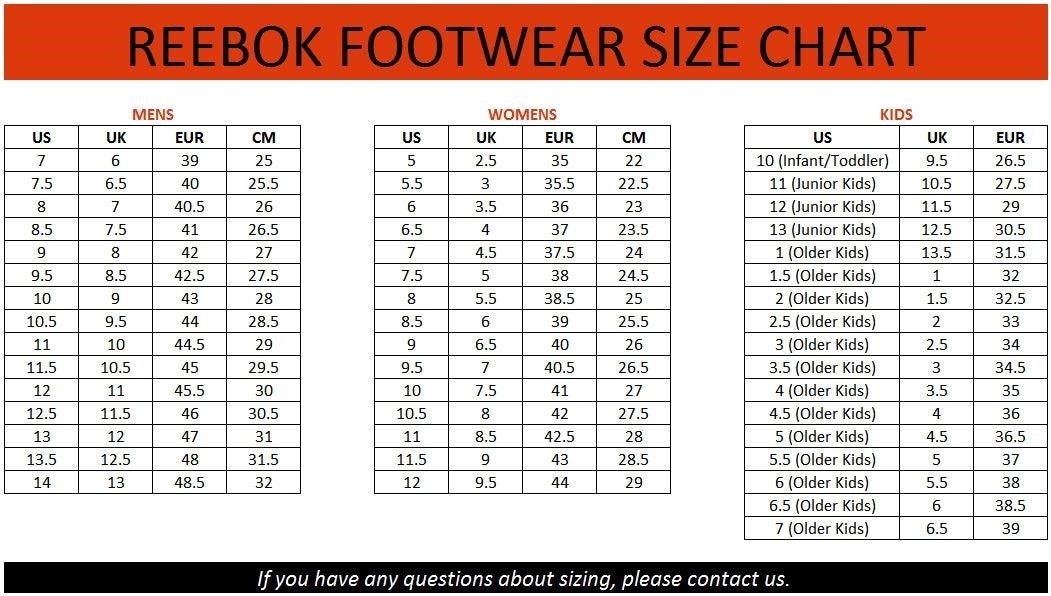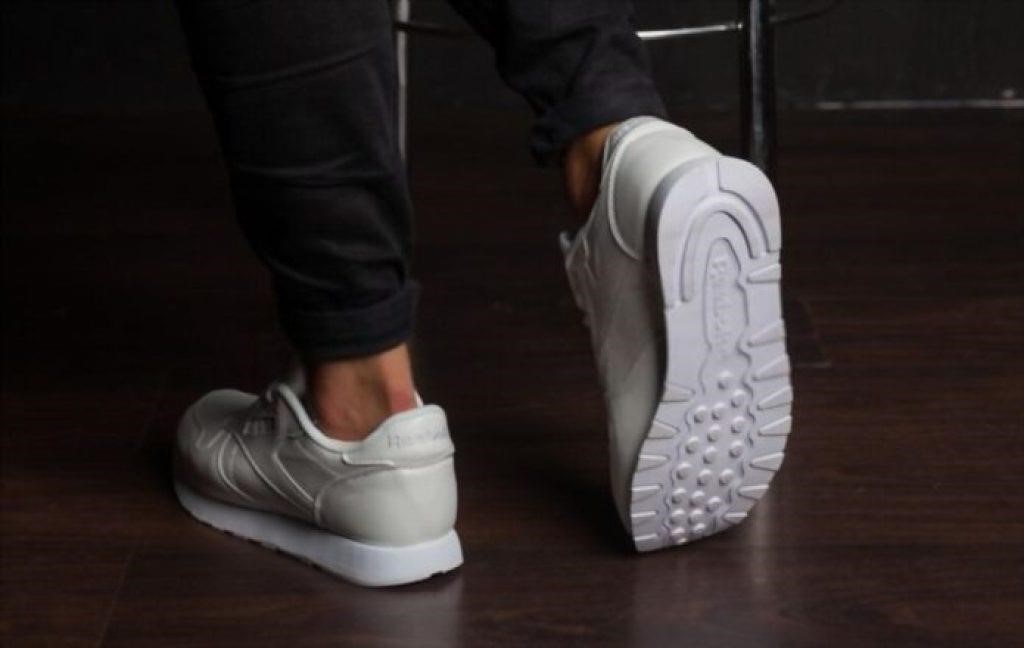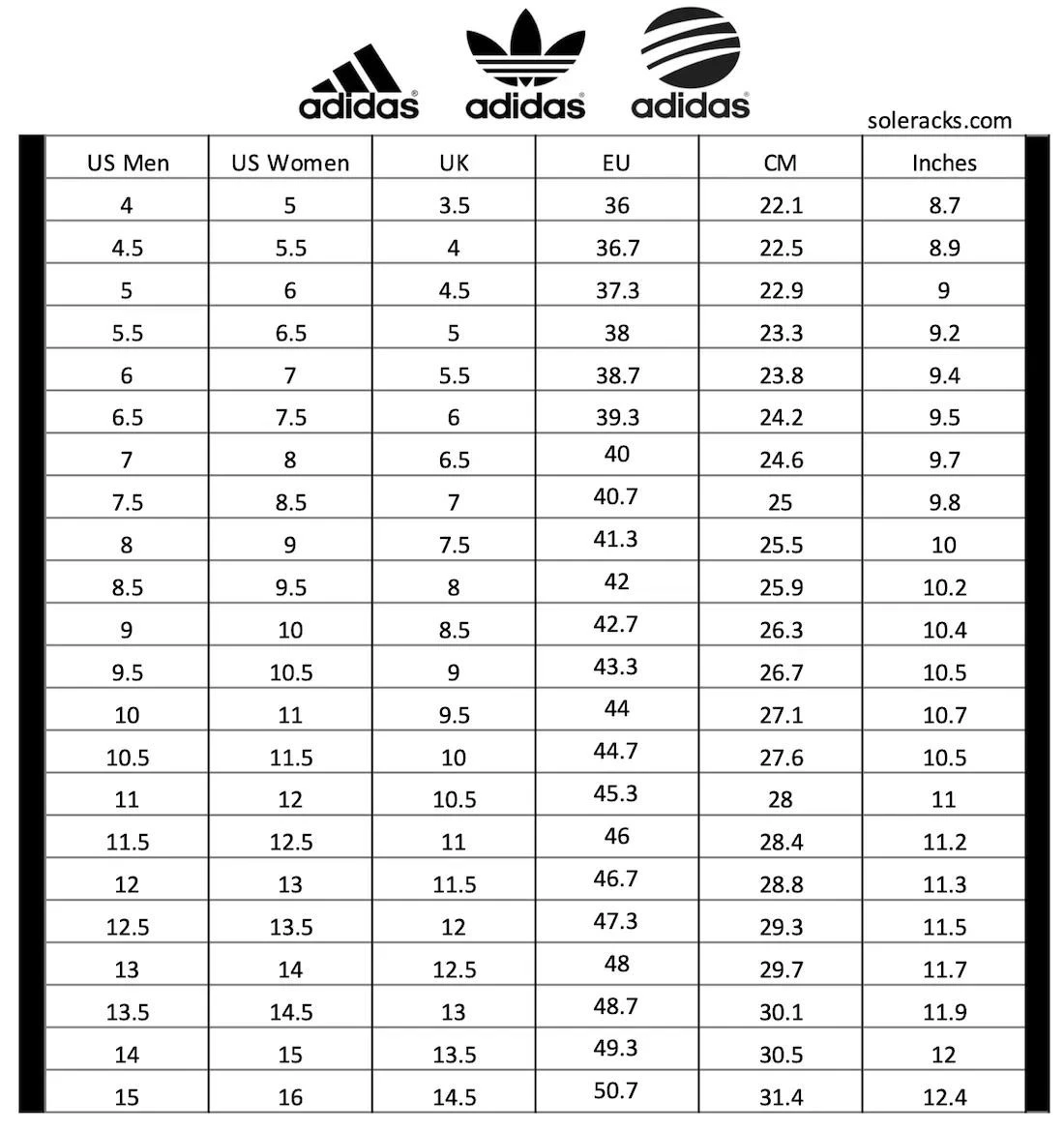Reebok Shoe Size Guide⁚ A Comprehensive Overview
This guide provides a detailed explanation of Reebok’s sizing system, encompassing men’s, women’s, and children’s sizes․ Learn how to accurately measure your feet, compare Reebok sizes to other brands, and address common sizing issues for the perfect fit․ Discover helpful tips and resources to ensure a smooth shopping experience․
Understanding Reebok Sizing
Reebok utilizes a comprehensive sizing system incorporating US, UK, European, Australian, and Japanese sizing for both men’s and women’s footwear․ Understanding this multi-system approach is crucial for accurate sizing․ Reebok’s sizing isn’t strictly uniform across all shoe styles; variations exist due to factors like shoe construction and intended use (running shoes versus casual sneakers)․ Therefore, consulting the specific size chart for the particular Reebok shoe model is recommended․ While generally consistent with other major brands like Nike and Adidas, slight discrepancies can occur․ Always prioritize accurate foot measurement to mitigate fitting issues and ensure optimal comfort and performance․ Reebok’s official size charts provide detailed heel-to-toe measurements in centimeters and inches, offering a precise guide․ Pay close attention to these measurements to avoid size-related problems․ Remember that the fit can vary depending on the specific Reebok shoe model․ Therefore, it is advisable to check the size chart for the specific shoe you want to purchase․
Measuring Your Feet for Accurate Sizing
Accurate foot measurement is paramount for selecting the correct Reebok shoe size․ Begin by placing a piece of paper against a wall, ensuring your heel is firmly touching the wall․ Stand on the paper, and mark the furthest point of your longest toe with a pen or pencil․ Repeat this process for both feet, as feet can differ slightly in size․ Using a ruler, measure the distance from the wall (your heel) to the mark you made․ Record this measurement in centimeters or inches for both feet; use the larger measurement when consulting Reebok’s size chart․ For best results, perform this measurement at the end of the day, as your feet tend to swell slightly throughout the day․ Consider using a measuring tool specifically designed for foot measurement for the highest accuracy․ Remember to wear the type of socks you intend to wear with your Reebok shoes during the measurement process to account for sock thickness․ This precise measurement helps ensure the best possible fit, maximizing comfort and preventing discomfort from ill-fitting shoes․
Reebok Men’s Shoe Size Chart
The following chart provides a general guide for men’s Reebok shoe sizes․ Note that individual shoe styles may vary slightly in fit, so it’s always best to refer to the specific product information for the most accurate sizing․ These measurements are approximations and may not perfectly align with every Reebok shoe model․ Always prioritize your measured foot length (in centimeters or inches) to ensure the most accurate fit․ Reebok shoe sizing generally aligns with other major brands like Nike and Adidas, but slight variations can occur․ This chart offers a helpful starting point, but personal preference and the specific shoe style should also inform your final decision; If unsure between two sizes, consider choosing the larger size for increased comfort․ For the most reliable results, always refer to the size chart provided on Reebok’s official website or the retailer’s website for the specific shoe you are purchasing․
| US Men’s Size | UK Size | EU Size | CM |
|---|---|---|---|
| ․․․ | ․․․ | ․․․ | ․․․ |

Reebok Women’s Shoe Size Chart
This chart offers approximate Reebok women’s shoe sizes․ Remember that fit can vary slightly depending on the specific shoe style and material․ Therefore, using your own foot measurement (in centimeters or inches) is crucial for achieving the best fit․ While Reebok’s sizing generally aligns with other major brands, such as Nike and Adidas, minor discrepancies can still exist․ This chart serves as a helpful guide, but it’s advisable to consult the specific product page for the shoe you’re interested in, as sizing information may differ based on the model․ If you find yourself between two sizes, it’s generally recommended to opt for the larger size, as this will provide more room and comfort․ For precise measurements and the most accurate fit, always refer to Reebok’s official size chart on their website or the retailer’s site where you intend to make your purchase․ Prioritize your own foot measurement for the most reliable result․
| US Women’s Size | UK Size | EU Size | CM |
|---|---|---|---|
| ․․; | ․․․ | ․․․ | ․․․ |
Reebok Kids’ Shoe Size Chart (if available)
Finding the perfect fit for your child’s Reebok shoes is crucial for comfort and proper foot development․ While a comprehensive Reebok kids’ size chart wasn’t directly available in the provided text, remember that accurate measurement is paramount․ Use a ruler and a piece of paper to measure your child’s foot length from heel to toe, ensuring they stand upright with their weight evenly distributed․ Compare this measurement to the available size charts provided by Reebok on their official website or the retailer you are considering․ Note that kids’ shoe sizing can vary between brands, so relying solely on a previous size from a different brand might not be accurate․ Always double-check the measurements and size conversions provided by Reebok․ Consider that children’s feet grow rapidly, so regular measurements are essential to ensure a continuously comfortable and supportive fit․ If possible, try the shoes on before purchasing to verify the fit․ Properly fitting shoes are vital for your child’s foot health and overall well-being․
| US Kids’ Size | UK Size | EU Size | CM |
|---|---|---|---|
| ․․․ | ․․․ | ․․․ | ․․․ |
Comparing Reebok Sizes to Other Brands (Nike, Adidas, etc․)
While Reebok, as a subsidiary of Adidas, shares a similar sizing scheme, direct comparisons across brands aren’t always consistent․ Although Reebok’s sizing often aligns with Nike and New Balance (except for women’s sizes), individual shoe models may vary․ Slight differences in design, materials, and manufacturing can influence the actual fit․ Therefore, relying solely on a known size from another brand might lead to an inaccurate fit․ It’s crucial to consult Reebok’s official size chart and measure your feet accurately before making a purchase․ Don’t assume that a size 9 in Nike will be the same as a size 9 in Reebok․ Always prioritize measuring your feet using the method outlined by Reebok, ensuring that you measure both feet and use the larger measurement․ Consider reading customer reviews to get insights on the fit of specific Reebok shoe models, as these can highlight any discrepancies from the standard sizing․ Remember that the fit can also vary depending on the style of shoe; for example, running shoes might have a different fit than casual sneakers․
Addressing Common Sizing Issues and FAQs
A frequent question is whether Reebok shoes run true to size․ While generally consistent, individual models may vary slightly․ Some users find certain styles run slightly larger or smaller, emphasizing the importance of measuring your feet․ Another common issue is finding the right width․ Reebok offers shoes in various widths, but if you have unusually narrow or wide feet, selecting the appropriate width is crucial for comfort․ If you’re between sizes, it’s advisable to choose the larger size, particularly for athletic shoes where a snug fit can restrict movement and cause discomfort․ Remember that the material of the shoe can also affect the overall fit; some materials are more flexible and may stretch over time․ Measuring your feet at the end of the day ensures more accurate results as your feet naturally swell throughout the day․ If you have any specific questions about a particular Reebok shoe’s fit or sizing, contacting Reebok customer service directly is recommended to obtain the most accurate and up-to-date information․ They can provide specific advice based on the shoe model and your individual measurements․
Reebok’s Return Policy and Size Exchanges
Reebok’s return policy and size exchange procedures vary depending on the retailer (online or physical store) and the specific circumstances of your purchase․ Before making a return or exchange, carefully review the retailer’s policy, which is usually available on their website or in-store․ Generally, most retailers allow returns within a specified timeframe (often 30 days) if the shoes are unworn, in their original packaging, and accompanied by proof of purchase․ For size exchanges, you may need to return the original pair and order the correct size separately․ Some retailers might offer in-store exchanges directly, while others require you to initiate a return and place a new order․ Shipping costs associated with returns and exchanges often depend on the retailer’s policy; some may offer free returns, while others might charge a fee․ Always retain your proof of purchase and shipping confirmation as this will be essential for processing your return or exchange․ Contacting customer service before returning or exchanging shoes is highly recommended to clarify the specific procedures and any applicable fees․
Different Reebok Shoe Styles and Their Fit
Reebok offers a wide variety of shoe styles, each with its own fit characteristics․ Running shoes, for example, often have a more snug fit to provide support and prevent slippage during activity․ They may incorporate features like wider toe boxes or specialized cushioning for enhanced comfort and performance․ Training shoes prioritize stability and may have a firmer midsole for better support during exercises like weightlifting․ Walking shoes, conversely, tend to be designed for comfort and flexibility with softer cushioning and a roomier fit for all-day wear․ Lifestyle shoes, encompassing casual sneakers and boots, vary greatly in fit․ Some might offer a more relaxed fit, while others could be more form-fitting depending on the design and intended use․ Consider the specific shoe’s description and reviews to gauge the anticipated fit, as different styles within the same category can vary․ Always consult Reebok’s size chart and measure your feet before ordering to minimize the risk of an ill-fitting purchase․ Remember that personal preferences and foot shape also play a significant role in determining the best fit for individual needs․

Finding Your Reebok Size Online and In-Store
Determining your Reebok shoe size is straightforward, whether shopping online or in-store․ Online retailers often provide detailed size charts, sometimes even interactive tools to assist in finding the correct fit․ Carefully measure your feet using the instructions provided on Reebok’s website or within the online store․ Pay close attention to units of measurement (inches or centimeters) and compare your measurements to the provided chart to determine your appropriate size․ Many online stores also feature customer reviews, which can offer insights into the fit of specific Reebok shoe models․ In physical stores, you can try on different Reebok shoes to find the perfect fit․ Remember that different styles may fit differently, so try on multiple pairs if necessary․ Sales associates can assist you in finding the right size and answering any questions․ Consider the time of day when measuring your feet, as they may swell slightly throughout the day․ For the most accurate measurement, it’s recommended to measure your feet at the end of the day․
Tips for Choosing the Right Reebok Shoe Size
Selecting the perfect Reebok shoe size involves more than just consulting a size chart․ Consider the specific shoe style; some Reebok models are designed with a narrower or wider fit than others․ Reading customer reviews can offer valuable insights into the fit of particular styles․ Pay attention to the material of the shoe; certain materials may stretch or mold to your feet over time, influencing the overall fit․ If you are between sizes, it is generally recommended to choose the larger size, especially for athletic shoes, to allow for comfortable movement and prevent discomfort during activity․ Think about your intended use; a running shoe will likely require a different fit than a casual sneaker․ Ensure your socks are the type you’ll wear with the Reeboks when measuring; thick socks will impact the overall fit․ When in doubt, it is always advisable to consult with a sales associate at a Reebok store or contact customer service if purchasing online․ Don’t hesitate to try on multiple pairs to ensure a comfortable and secure fit, allowing ample room for your toes to move freely without feeling cramped․ Prioritize comfort and avoid shoes that feel too tight․
Using Reebok’s Official Size Chart
Reebok’s official size chart is your primary tool for accurate sizing․ It typically provides measurements in US, UK, European, and Japanese sizes, along with corresponding inch and centimeter conversions․ Before using the chart, it’s crucial to measure your feet accurately․ Stand on a piece of paper with your heel against a wall, and mark the furthest point of your longest toe․ Measure the distance from the wall to your mark․ Repeat this process for both feet and use the larger measurement․ Locate this measurement on the Reebok size chart to determine your corresponding shoe size․ Note that the chart might show slight variations in measurements depending on the specific shoe model; the material and design can slightly affect the overall fit․ Reebok’s online size chart is easily accessible on their website, usually found within product descriptions or a dedicated sizing section․ If you encounter any difficulties interpreting the chart or have questions, Reebok’s customer service is a valuable resource for assistance․ Remember to always refer to the chart for the specific shoe style you intend to purchase․
Additional Resources and Support
Beyond Reebok’s official size chart, several resources can aid in finding the perfect fit․ Online forums and review sites often feature discussions about Reebok shoe sizing, offering user experiences and comparisons․ Checking reviews for the specific shoe model you’re considering can provide valuable insights into fit and sizing accuracy․ Many retailers selling Reebok shoes offer detailed size guides or conversion charts on their websites, sometimes providing more specific measurements or fit recommendations for particular styles․ Don’t hesitate to contact Reebok customer service directly; they can offer personalized advice and answer any questions about their sizing system or particular shoe models․ Social media platforms may also provide helpful information from other Reebok customers․ Remember to consider factors like shoe type (running, training, casual), as fit can differ slightly between styles․ If you remain uncertain, ordering multiple sizes with a retailer that offers easy returns is always a prudent approach․ Utilizing these resources collectively increases your chances of a perfect fit․
